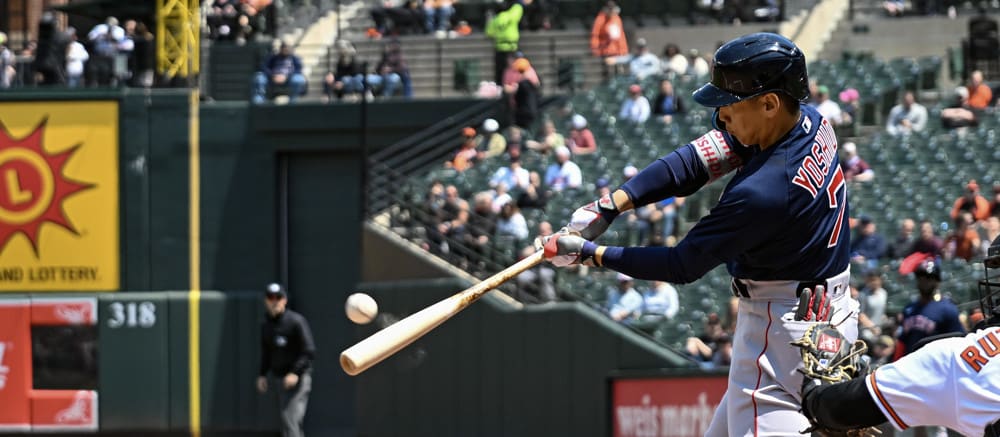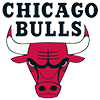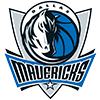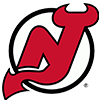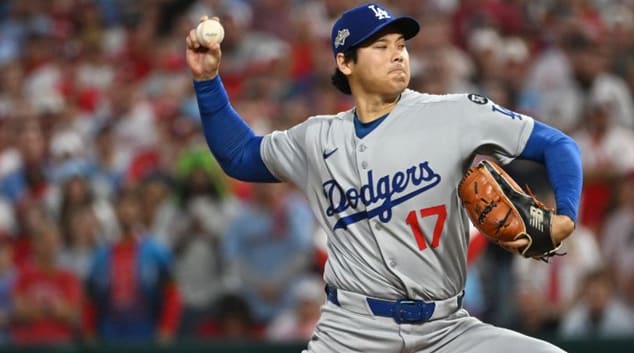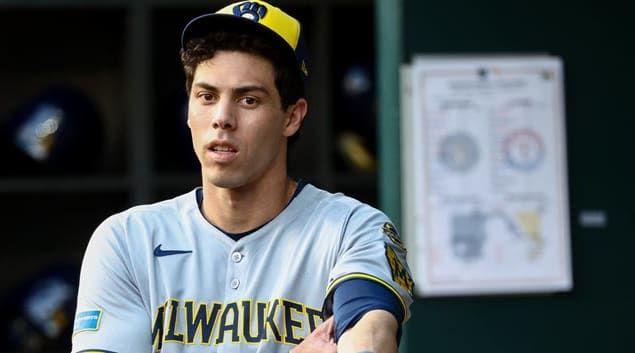We're still less than a quarter of the way through the regular season, but we're deep enough into the year that you can start to split players' stats into smaller stretches without being immediately jumped on for misuse of statistics. That's not to say that we should brazenly chop up samples to suit our needs, as we nearly always want to consider more data, not less, when analyzing players. There's a reason sabermetric analysis doesn't tend to focus on batter vs. pitcher data or any number of other narratively interesting but rarely predictive splits. If you want to know what Mike Trout will do on a Thursday afternoon in July while Jupiter is in Aquarius, ignoring his games on Monday nights in April while Neptune is in Kuala Lumpur isn't going to get you any closer to the truth.
In general, dividing the approximately 35 games teams have played thus far into smaller samples will do more to confuse than to inform, but it can be informative in many cases, some of which appear in this column. Perhaps a player is playing in MLB for the first time and simply needed a couple weeks to get his bearings. Perhaps (and this is particularly common for pitchers) they weren't as built up as they liked to be by the end of spring training and stumbled out of the gate but are now back to 100 percent. Other players failed to win a starting role or even a roster spot in camp
We're still less than a quarter of the way through the regular season, but we're deep enough into the year that you can start to split players' stats into smaller stretches without being immediately jumped on for misuse of statistics. That's not to say that we should brazenly chop up samples to suit our needs, as we nearly always want to consider more data, not less, when analyzing players. There's a reason sabermetric analysis doesn't tend to focus on batter vs. pitcher data or any number of other narratively interesting but rarely predictive splits. If you want to know what Mike Trout will do on a Thursday afternoon in July while Jupiter is in Aquarius, ignoring his games on Monday nights in April while Neptune is in Kuala Lumpur isn't going to get you any closer to the truth.
In general, dividing the approximately 35 games teams have played thus far into smaller samples will do more to confuse than to inform, but it can be informative in many cases, some of which appear in this column. Perhaps a player is playing in MLB for the first time and simply needed a couple weeks to get his bearings. Perhaps (and this is particularly common for pitchers) they weren't as built up as they liked to be by the end of spring training and stumbled out of the gate but are now back to 100 percent. Other players failed to win a starting role or even a roster spot in camp but are already on the second chapter of their seasons and have quickly emerged as important contributors.
It's usually best to err on the side of taking a players' best stretches with his bad ones and assuming that the whole picture gives the clearest explanation his ability, but if you can find an example where such a division is genuinely informative, it can present a buying opportunity. Of course, it's always going to be hard to move for a player in the middle of a hot streak, but you might be able to find a trade partner who believes themselves to be selling high when in fact they're getting rid of a player right as they started to show a new skill level.
RISERS
 Masataka Yoshida, OF, Red Sox: Yoshida spent the spring helping Japan to a World Baseball Classic title, but his first MLB regular season got off to a slow start. In his first 13 games, he hit just .167/.310/.250. Even then, there were encouraging signs, as his low batting average came with an 8.6 percent strikeout rate, suggesting that his .167 BABIP deserved most of the blame for his small-sample struggles. Sure enough, he's since gone on to slash .438/.479/.750 over the course of a still-active 16-game hitting streak. His strikeout rate remains effectively identical (8.5 percent), but his BABIP jumped to .426. Combine the two stretches and the results are still excellent. His .321/.403/.536 slash line is good for a 155 wRC+, the 18th-best mark among qualified hitters. He never projected for a ton of power or speed, but his six homers and two steals have him on pace for 27 and 9, respectively. Yoshida's 9.8 percent barrel rate and 48.0 percent hard hit rate back up the power that he's shown thus far, and his elite contact ability means that even if everything else suddenly evaporates, he could still contend for a batting title.
Masataka Yoshida, OF, Red Sox: Yoshida spent the spring helping Japan to a World Baseball Classic title, but his first MLB regular season got off to a slow start. In his first 13 games, he hit just .167/.310/.250. Even then, there were encouraging signs, as his low batting average came with an 8.6 percent strikeout rate, suggesting that his .167 BABIP deserved most of the blame for his small-sample struggles. Sure enough, he's since gone on to slash .438/.479/.750 over the course of a still-active 16-game hitting streak. His strikeout rate remains effectively identical (8.5 percent), but his BABIP jumped to .426. Combine the two stretches and the results are still excellent. His .321/.403/.536 slash line is good for a 155 wRC+, the 18th-best mark among qualified hitters. He never projected for a ton of power or speed, but his six homers and two steals have him on pace for 27 and 9, respectively. Yoshida's 9.8 percent barrel rate and 48.0 percent hard hit rate back up the power that he's shown thus far, and his elite contact ability means that even if everything else suddenly evaporates, he could still contend for a batting title.
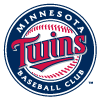 Joe Ryan, SP, Twins: Is Ryan becoming an ace? I had been thinking of him as a interesting mid-rotation starter with upside more than an elite weapon, but when James Anderson moved him up to the 15th-ranked pitcher in his latest dynasty rankings update this past week, it certainly caught my eye. Ryan's relative youth — he's 26 years old, tied for second-youngest among James' top-15 starters — helps him on a dynasty-focused list, and you might not find many who'd take him as the 15th-best starter for this year alone, but he's rapidly ascending toward that territory. Looking at just his strikeout and walk rates, two stats that may not tell the whole story but that tell a fair amount of it and stabilize quickly, suggests he has a case already. A 27.8 percent strikeout rate and 3.6 percent walk rate puts him seventh in K percentage-BB percentage among qualified starters, trailing only Spencer Strider, Zac Gallen, Kevin Gausman, Shohei Ohtani, Logan Gilbert and Pablo Lopez. Ryan had better than average strikeout and walk numbers last year as well, but a 27.7 percent groundball rate left him susceptible to homers. His groundball rate is at a much stronger 39.8 percent this year, helping drop his ERA to 2.45.
Joe Ryan, SP, Twins: Is Ryan becoming an ace? I had been thinking of him as a interesting mid-rotation starter with upside more than an elite weapon, but when James Anderson moved him up to the 15th-ranked pitcher in his latest dynasty rankings update this past week, it certainly caught my eye. Ryan's relative youth — he's 26 years old, tied for second-youngest among James' top-15 starters — helps him on a dynasty-focused list, and you might not find many who'd take him as the 15th-best starter for this year alone, but he's rapidly ascending toward that territory. Looking at just his strikeout and walk rates, two stats that may not tell the whole story but that tell a fair amount of it and stabilize quickly, suggests he has a case already. A 27.8 percent strikeout rate and 3.6 percent walk rate puts him seventh in K percentage-BB percentage among qualified starters, trailing only Spencer Strider, Zac Gallen, Kevin Gausman, Shohei Ohtani, Logan Gilbert and Pablo Lopez. Ryan had better than average strikeout and walk numbers last year as well, but a 27.7 percent groundball rate left him susceptible to homers. His groundball rate is at a much stronger 39.8 percent this year, helping drop his ERA to 2.45.
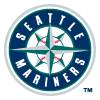 Bryce Miller, SP, Mariners: Perhaps the defining feature of this fantasy season so far has been the early arrival of a large wave of pitchers whose debuts didn't look imminent enough during draft season to generate much redraft interest. The result has been tons of big FAAB spending on rookie arms like Taj Bradley, Mason Miller, Tanner Bibee and Logan Allen. Bryce Miller joined that group this past week, getting the call straight from Double-A and allowing a total of one run on four hits in 12 innings across his first two starts. There was nothing fancy about his approach, as he's thrown his excellent fastball 70.5 percent of the time, but it's led to 15 strikeouts and just one walk so far. The projection systems are already buying in, with ATC giving him the best projected ERA (4.00), WHIP (1.22) and strikeout rate (25.6 percent) among the aforementioned group of rookies. Miller also has a very clear path to remaining in the rotation all year if he pitches well enough, with Robbie Ray done for the year after Tommy John surgery and Chris Flexen unlikely to provide tough competition.
Bryce Miller, SP, Mariners: Perhaps the defining feature of this fantasy season so far has been the early arrival of a large wave of pitchers whose debuts didn't look imminent enough during draft season to generate much redraft interest. The result has been tons of big FAAB spending on rookie arms like Taj Bradley, Mason Miller, Tanner Bibee and Logan Allen. Bryce Miller joined that group this past week, getting the call straight from Double-A and allowing a total of one run on four hits in 12 innings across his first two starts. There was nothing fancy about his approach, as he's thrown his excellent fastball 70.5 percent of the time, but it's led to 15 strikeouts and just one walk so far. The projection systems are already buying in, with ATC giving him the best projected ERA (4.00), WHIP (1.22) and strikeout rate (25.6 percent) among the aforementioned group of rookies. Miller also has a very clear path to remaining in the rotation all year if he pitches well enough, with Robbie Ray done for the year after Tommy John surgery and Chris Flexen unlikely to provide tough competition.
 Luis Arraez, 1B/2B, Marlins: I haven't been sure exactly when to feature Arraez in this column, as he isn't doing anything categorically different this season than he has in the past. But at some point, a .414 batting average can't go unacknowledged. His .435 BABIP means that number will surely go down, but his .341 xBA leaves little doubt that Arraez has earned an outstanding batting average thus far. League-wide batting average has gone up from .243 to .248 this season, in part due to the new rules, though it's tough to credit the shift ban for Arraez's improvements, as he was shifted just 13 total times last season. Instead, he's making even more contact than before. After striking out 8.3 percent of the time in his four seasons in Minnesota, he's cut that down to a miniscule 6.2 percent in his first year in Miami. Arraez has made contact on a simply ridiculous 95.3 percent of his swings, which is both a career-best and league-best mark. You have to go back to Marco Scutaro in 2013 to find a qualified hitter with a higher number; second-place since then is Arraez himself in last season (94.1 percent), and this year's second-best contact wizard Steven Kwan trails Arraez by nearly four percentage points (91.5 percent).
Luis Arraez, 1B/2B, Marlins: I haven't been sure exactly when to feature Arraez in this column, as he isn't doing anything categorically different this season than he has in the past. But at some point, a .414 batting average can't go unacknowledged. His .435 BABIP means that number will surely go down, but his .341 xBA leaves little doubt that Arraez has earned an outstanding batting average thus far. League-wide batting average has gone up from .243 to .248 this season, in part due to the new rules, though it's tough to credit the shift ban for Arraez's improvements, as he was shifted just 13 total times last season. Instead, he's making even more contact than before. After striking out 8.3 percent of the time in his four seasons in Minnesota, he's cut that down to a miniscule 6.2 percent in his first year in Miami. Arraez has made contact on a simply ridiculous 95.3 percent of his swings, which is both a career-best and league-best mark. You have to go back to Marco Scutaro in 2013 to find a qualified hitter with a higher number; second-place since then is Arraez himself in last season (94.1 percent), and this year's second-best contact wizard Steven Kwan trails Arraez by nearly four percentage points (91.5 percent).
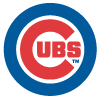 Matt Mervis, 1B, Cubs: Mervis did about all he could to stake his claim for a big-league job during his 57 games for Triple-A Iowa down the stretch last season, homering 15 times while slashing .297/.383/.593 with a 14.6 percent strikeout rate. Given the Cubs' lack of alternatives at first base, the way seemed clear for him at the start of the winter, but the team instead brought in Trey Mancini, Eric Hosmer and Edwin Rios. On May 4, with Mancini (.696), Hosmer (.657 OPS) and Rios (.580 OPS) all struggling and Mervis hitting .286/.402/.560 in the minors, he finally got his chance. He's since started four straight games at first base, with Rios optioned to Iowa and Mancini and Hosmer fighting for time at designated hitter. The results haven't been anything special so far, but a four-game sample tells us very little about Mervis' future. If he hits, he'll play, and his minor-league track record gives plenty of reason to believe he'll hit. One caveat to keep in mind is that Mervis has been old for his level throughout his minor-league career, which has led to rather modest projections, but he doesn't have to show all that much to earn at-bats given the caliber of competition in Chicago.
Matt Mervis, 1B, Cubs: Mervis did about all he could to stake his claim for a big-league job during his 57 games for Triple-A Iowa down the stretch last season, homering 15 times while slashing .297/.383/.593 with a 14.6 percent strikeout rate. Given the Cubs' lack of alternatives at first base, the way seemed clear for him at the start of the winter, but the team instead brought in Trey Mancini, Eric Hosmer and Edwin Rios. On May 4, with Mancini (.696), Hosmer (.657 OPS) and Rios (.580 OPS) all struggling and Mervis hitting .286/.402/.560 in the minors, he finally got his chance. He's since started four straight games at first base, with Rios optioned to Iowa and Mancini and Hosmer fighting for time at designated hitter. The results haven't been anything special so far, but a four-game sample tells us very little about Mervis' future. If he hits, he'll play, and his minor-league track record gives plenty of reason to believe he'll hit. One caveat to keep in mind is that Mervis has been old for his level throughout his minor-league career, which has led to rather modest projections, but he doesn't have to show all that much to earn at-bats given the caliber of competition in Chicago.
 Brent Rooker, OF, Athletics: We like to think of sports as some sort of efficient, idealized meritocracy. Like so many things in life, though, it's at best a meritocracy among those who have been given sufficient chances to show their merit. Rooker hadn't been completely without his chances through the end of his age-27 season, but he'd only received 270 MLB plate appearances, and his only extended run in the starting lineup came in the second half of the season for a Twins team that finished last in the AL Central in 2021. He entered this year as a 28-year-old with a career .200/.289/.379 big-league slash line, but his .274/.388/.588 line in 210 Triple-A games dating back to 2019 suggested he was a reasonable bet to produce if he finally found regular playing time. At-bats abound in Oakland, and while Rooker initially won nothing more than a spot on the short side of a platoon, he's now an everyday player and one of the top performers in the league. His 10 homers tie him for fifth, while his .319/.441/.681 slash line is good for a 206 wRC+, the best mark among qualified hitters. You'd be hard-pressed to find someone who buys into Rooker continuing anything close to his MVP form, but his line is no mere BABIP-fueled fluke. He's combined a league-average strikeout rate (22.9 percent) with an outstanding 21.4 percent barrel rate, the fourth-best mark among qualified hitters.
Brent Rooker, OF, Athletics: We like to think of sports as some sort of efficient, idealized meritocracy. Like so many things in life, though, it's at best a meritocracy among those who have been given sufficient chances to show their merit. Rooker hadn't been completely without his chances through the end of his age-27 season, but he'd only received 270 MLB plate appearances, and his only extended run in the starting lineup came in the second half of the season for a Twins team that finished last in the AL Central in 2021. He entered this year as a 28-year-old with a career .200/.289/.379 big-league slash line, but his .274/.388/.588 line in 210 Triple-A games dating back to 2019 suggested he was a reasonable bet to produce if he finally found regular playing time. At-bats abound in Oakland, and while Rooker initially won nothing more than a spot on the short side of a platoon, he's now an everyday player and one of the top performers in the league. His 10 homers tie him for fifth, while his .319/.441/.681 slash line is good for a 206 wRC+, the best mark among qualified hitters. You'd be hard-pressed to find someone who buys into Rooker continuing anything close to his MVP form, but his line is no mere BABIP-fueled fluke. He's combined a league-average strikeout rate (22.9 percent) with an outstanding 21.4 percent barrel rate, the fourth-best mark among qualified hitters.
FALLERS
 Willson Contreras, C, Cardinals: When the Cardinals agreed to give Contreras five years and $87.5 million in December, surely they were aware of his reputation as a bat-first backstop, weren't they? Barely more than a month into his tenure with the club, the Cardinals have already decided he can't hack it behind the plate, electing to move him to designated hitter for the foreseeable future. It's true that his framing numbers have been disappointing this season, but that's something the Cardinals should have been prepared for, and it's something Contreras has continued to make up for by swinging a strong bat for a catcher, slashing .265/.341/.393 (107 wRC+). This couldn't look much more like a panic move for the 11-24 club, and manager Oliver Marmol's reasoning is far from reassuring:
Willson Contreras, C, Cardinals: When the Cardinals agreed to give Contreras five years and $87.5 million in December, surely they were aware of his reputation as a bat-first backstop, weren't they? Barely more than a month into his tenure with the club, the Cardinals have already decided he can't hack it behind the plate, electing to move him to designated hitter for the foreseeable future. It's true that his framing numbers have been disappointing this season, but that's something the Cardinals should have been prepared for, and it's something Contreras has continued to make up for by swinging a strong bat for a catcher, slashing .265/.341/.393 (107 wRC+). This couldn't look much more like a panic move for the 11-24 club, and manager Oliver Marmol's reasoning is far from reassuring:
"The way I would describe it is truly understanding our internal system of executing the game plan for each individual pitcher. The reality is, it's more than he's ever had to do. Nothing against the way he's done it, but it's very different and it's a lot of work."
I only see three potential conclusions to draw from that statement:
- The Cardinals have developed a remarkably complex system of gamecalling that can't be understood by anyone short of Yadier Molina.
- The Cardinals aren't doing anything unique, but Contreras is uniquely stupid and can't grasp concepts that every other MLB catcher can.
- Marmol is lying and using Contreras as a scapegoat, either to protect himself or to protect his underperforming pitchers.
None of those conclusions are encouraging. If it's option A, that means the organization can't adapt to its personnel. If option B, why wasn't that noticed during contract negotiations, let alone not noticed by the Cubs for seven seasons? If option C, that's questionable leadership by Marmol at best. The fantasy implications of this saga might therefore be less about Contreras — he's started four straight games at DH and doesn't seem to be losing at-bats — and more about a general sense of malaise and dysfunction that now clouds the entire Cardinals organization, an unusual sight in St. Louis.
 Nolan Arenado, 3B, Cardinals: Last year was the best season of Arenado's career once you adjust for last year's offensive environment and the fact that he no longer called Coors Field home. Neither his 30 homers nor any element of his .293/.358/.533 slash line were career highs, but his 151 wRC+ easily surpassed his previous career best of 133. This year, he's at a 69 wRC+ and a .232/.282/.326 slash line. Arenado has gotten to success in an unusual way in the past, as he doesn't actually hit the ball all that hard. His 38.3 percent hard hit rate for his career is almost exactly league average, but he makes a ton of contact, striking out 14.8 percent of the time for his career and 11.6 percent of the time last season. That makes him sound like a slap hitter, but when those numbers were paired with a 49.9 percent flyball rate last year, the result was homers and doubles rather than seeing-eye singles. Everything looks off this season. His hard hit rate (33.3 percent) is down, but again, that's never been his game. The fact that his strikeout rate has spiked to 20.8 percent percent while his flyball rate collapsed to 35.2 percent is much more worrisome.
Nolan Arenado, 3B, Cardinals: Last year was the best season of Arenado's career once you adjust for last year's offensive environment and the fact that he no longer called Coors Field home. Neither his 30 homers nor any element of his .293/.358/.533 slash line were career highs, but his 151 wRC+ easily surpassed his previous career best of 133. This year, he's at a 69 wRC+ and a .232/.282/.326 slash line. Arenado has gotten to success in an unusual way in the past, as he doesn't actually hit the ball all that hard. His 38.3 percent hard hit rate for his career is almost exactly league average, but he makes a ton of contact, striking out 14.8 percent of the time for his career and 11.6 percent of the time last season. That makes him sound like a slap hitter, but when those numbers were paired with a 49.9 percent flyball rate last year, the result was homers and doubles rather than seeing-eye singles. Everything looks off this season. His hard hit rate (33.3 percent) is down, but again, that's never been his game. The fact that his strikeout rate has spiked to 20.8 percent percent while his flyball rate collapsed to 35.2 percent is much more worrisome.
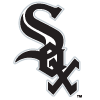 Dylan Cease, SP, White Sox: Cease was excellent last season, finishing second in AL Cy Young voting thanks to a 2.20 ERA (third-best among qualified starters) and 30.4 percent strikeout rate (fifth-best). That made it easy to look past his otherwise troublesome 10.4 percent walk rate. That was the worst mark among qualified starters, with only Nick Pivetta finishing within a point of him. Hardly the best company, and ordinarily a pretty obvious red flag, but given that Cease had already proven that he could be successful despite the walks, it's understandable that many drafters felt perfectly comfortable with him. The results through his first eight starts have been ugly. His walk rate (10.6 percent) is virtually unchanged, but his strikeout rate has fallen to a merely good 25.9 percent while his ERA has jumped to 5.58. Much of the damage to that mark has come in his last three starts, as he's allowed a combined 17 earned runs in 14 innings to the Rays, Twins and Royals. Making things even more discouraging is the fact that Cease's fastball velocity is down 0.9 mph from last season. It seems very reasonable at this point to worry that while Cease can make his poor control work when everything else is clicking, it becomes untenable when he's not getting an elite amount of whiffs.
Dylan Cease, SP, White Sox: Cease was excellent last season, finishing second in AL Cy Young voting thanks to a 2.20 ERA (third-best among qualified starters) and 30.4 percent strikeout rate (fifth-best). That made it easy to look past his otherwise troublesome 10.4 percent walk rate. That was the worst mark among qualified starters, with only Nick Pivetta finishing within a point of him. Hardly the best company, and ordinarily a pretty obvious red flag, but given that Cease had already proven that he could be successful despite the walks, it's understandable that many drafters felt perfectly comfortable with him. The results through his first eight starts have been ugly. His walk rate (10.6 percent) is virtually unchanged, but his strikeout rate has fallen to a merely good 25.9 percent while his ERA has jumped to 5.58. Much of the damage to that mark has come in his last three starts, as he's allowed a combined 17 earned runs in 14 innings to the Rays, Twins and Royals. Making things even more discouraging is the fact that Cease's fastball velocity is down 0.9 mph from last season. It seems very reasonable at this point to worry that while Cease can make his poor control work when everything else is clicking, it becomes untenable when he's not getting an elite amount of whiffs.
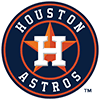 Jose Abreu, 1B, Astros: Abreu did turn 36 years old in January, but he still seemed like a fine target during draft season. Despite a down year in the power department last season in which he managed just 15 homers, he still hit a strong .304/.378/.446 (137 wRC+) overall, and a move to Houston with its strong lineup and short left field porch seemed likely to lead to a gentle transition into Abreu's late thirties. Those expectations could hardly be further from the results in the veteran's first 35 games in blue and orange. He's yet to hit a homer and is slashing just .225/.272/.268 overall, and even though he's been in the lineup every game, he hasn't hit well enough to rack up the counting stats, with his 23 runs plus RBI merely tying him or 21st among first basemen, one spot above Eric Hosmer. Everything is trending in the wrong direction under the hood as well, with Abreu's strikeout rate (21.8 percent), walk rate (5.4 percent) and barrel rate (4.7 percent) all coming in at least four points worse than last season. That strikeout rate is still perfectly adequate, but Abreu needs to start impacting the ball like we know he's capable of if he's to come anywhere close to justifying his draft cost.
Jose Abreu, 1B, Astros: Abreu did turn 36 years old in January, but he still seemed like a fine target during draft season. Despite a down year in the power department last season in which he managed just 15 homers, he still hit a strong .304/.378/.446 (137 wRC+) overall, and a move to Houston with its strong lineup and short left field porch seemed likely to lead to a gentle transition into Abreu's late thirties. Those expectations could hardly be further from the results in the veteran's first 35 games in blue and orange. He's yet to hit a homer and is slashing just .225/.272/.268 overall, and even though he's been in the lineup every game, he hasn't hit well enough to rack up the counting stats, with his 23 runs plus RBI merely tying him or 21st among first basemen, one spot above Eric Hosmer. Everything is trending in the wrong direction under the hood as well, with Abreu's strikeout rate (21.8 percent), walk rate (5.4 percent) and barrel rate (4.7 percent) all coming in at least four points worse than last season. That strikeout rate is still perfectly adequate, but Abreu needs to start impacting the ball like we know he's capable of if he's to come anywhere close to justifying his draft cost.


